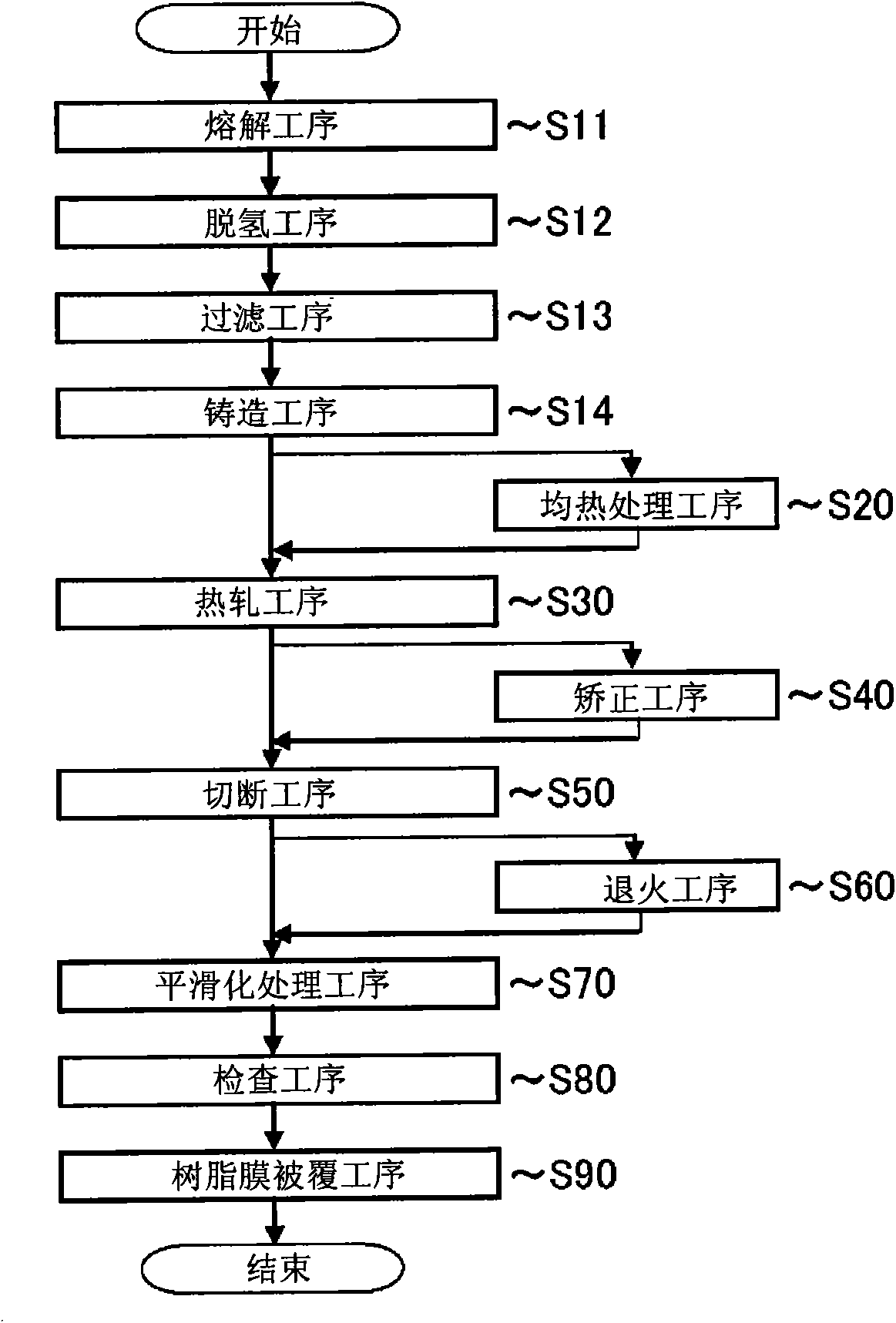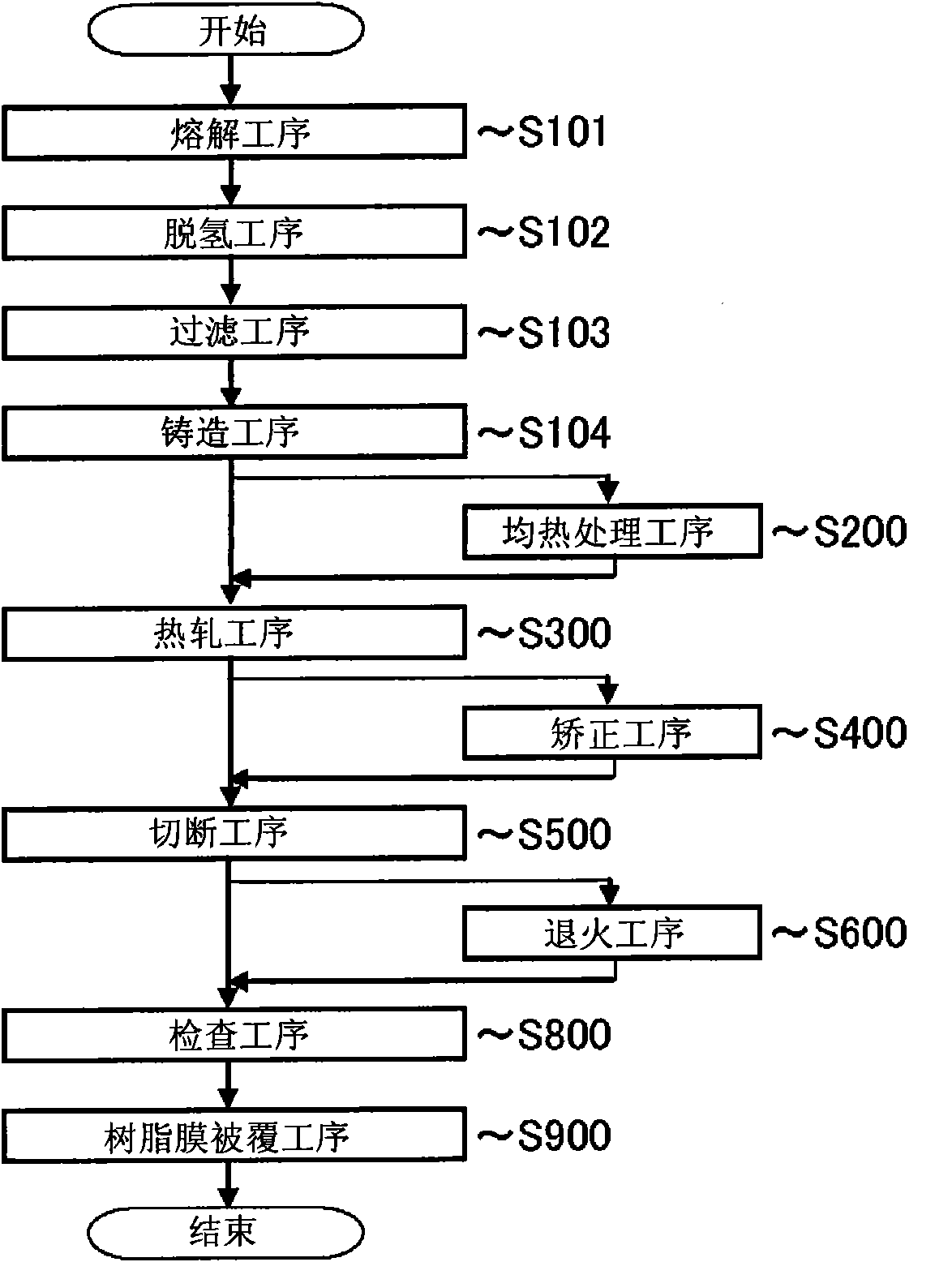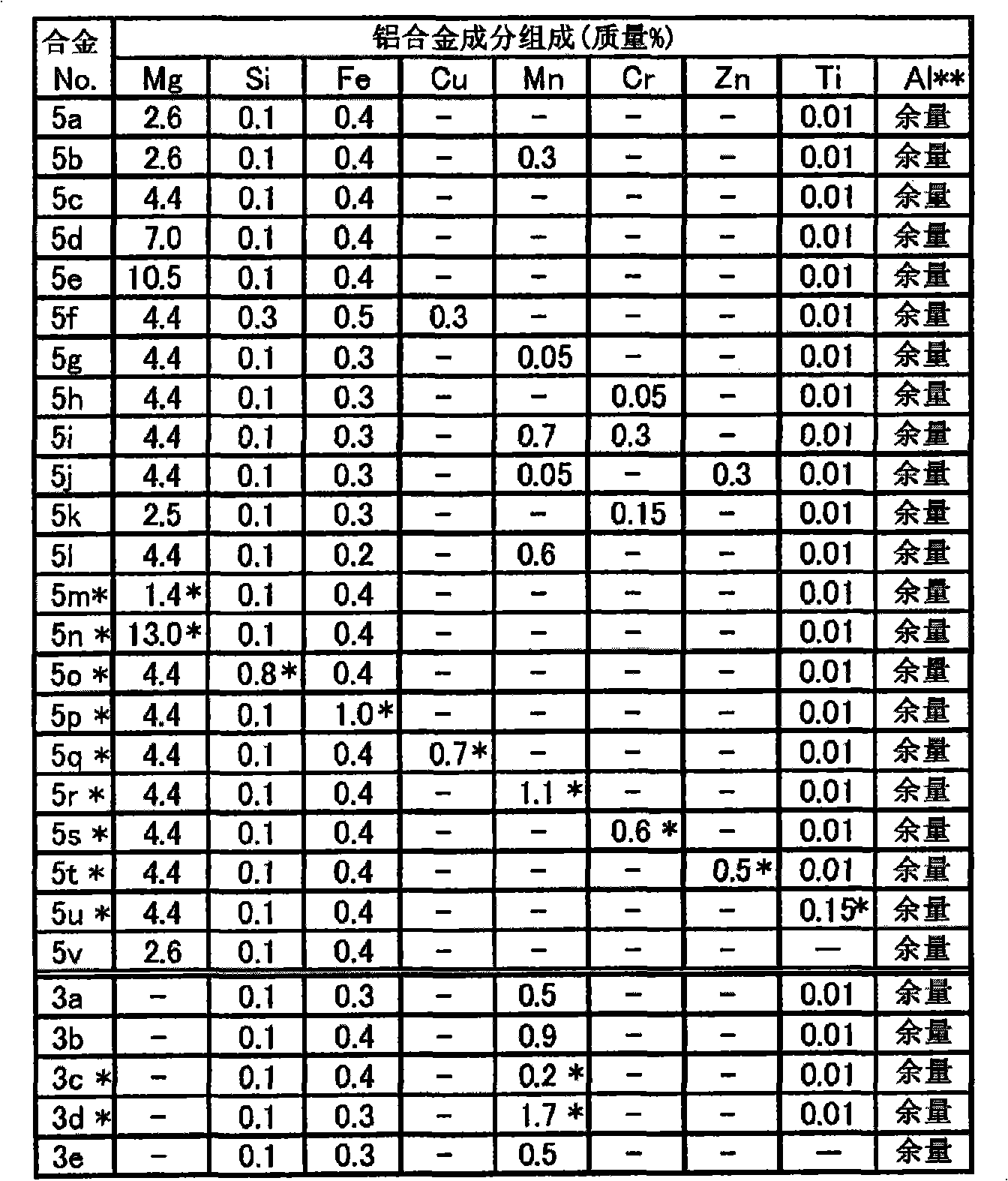Aluminum alloy plate and process for producing the same
A manufacturing method and aluminum alloy technology, applied in metal rolling, manufacturing tools, metal rolling, etc., can solve problems such as melting residues, achieve good surface properties, suppress surface defects, and improve strength and other characteristics
- Summary
- Abstract
- Description
- Claims
- Application Information
AI Technical Summary
Problems solved by technology
Method used
Image
Examples
Embodiment 1
[0125] [Example 1: Test material manufacture]
[0126] (Al-Mg alloy)
[0127] Aluminum alloys (5k: JIS5052 alloy, 5l: JIS5083 alloy, 5v without Ti, B) having compositions of alloy Nos. 5a to 5v shown in Table 1 were melted, dehydrogenated, filtered, and cast to produce An ingot with a plate thickness of 500 mm. This ingot was heat-treated at 500° C. for 4 hours, and then hot-rolled to manufacture aluminum alloy hot-rolled sheets with a thickness of about 25 mm and a thickness of about 20 mm. This aluminum alloy hot-rolled sheet was cut into a rolling direction length of 2000 mm x width of 1000 mm, and then the rolling surface (both sides) was smoothed to obtain an aluminum alloy thick plate (cut plate) with a thickness of 20 mm. In addition, for an alloy containing Ti, a Ti-B master alloy is added in order to prevent cracks in the ingot. The effects of smoothing were compared by three methods: end mill processing, end mill processing + hairline processing (using belt-polish...
Embodiment 2
[0167] [Example 2: Test material manufacture]
[0168] (Al-Mg-Si alloy)
[0169] Aluminum alloys having compositions of alloy Nos. 6a to 6g shown in Table 4 were melted, dehydrogenated, filtered, and then cast to produce ingots with a plate thickness of 500 mm. This ingot was hot-rolled to produce aluminum alloy hot-rolled sheets with a thickness of about 25 mm and a thickness of about 20 mm. This aluminum alloy hot-rolled sheet was cut into a rolling direction length of 2000 mm x width of 1000 mm, and then the rolling surface (both sides) was smoothed to obtain an aluminum alloy thick plate (cut plate) with a thickness of 20 mm. In addition, for the aluminum alloy containing Ti, in order to prevent the ingot from cracking, a Ti-B master alloy is added. The effects of smoothing were compared by three methods: end mill processing, end mill processing + hairline processing (using belt-polished nonwoven fabric), and hairline processing. In addition, the aluminum alloy hot-roll...
PUM
| Property | Measurement | Unit |
|---|---|---|
| thickness | aaaaa | aaaaa |
| thickness | aaaaa | aaaaa |
| thickness | aaaaa | aaaaa |
Abstract
Description
Claims
Application Information
 Login to View More
Login to View More - Generate Ideas
- Intellectual Property
- Life Sciences
- Materials
- Tech Scout
- Unparalleled Data Quality
- Higher Quality Content
- 60% Fewer Hallucinations
Browse by: Latest US Patents, China's latest patents, Technical Efficacy Thesaurus, Application Domain, Technology Topic, Popular Technical Reports.
© 2025 PatSnap. All rights reserved.Legal|Privacy policy|Modern Slavery Act Transparency Statement|Sitemap|About US| Contact US: help@patsnap.com



